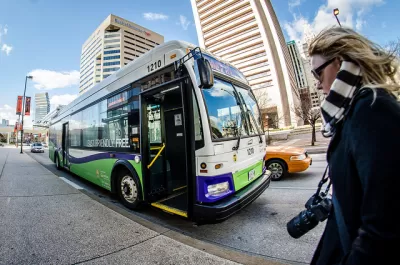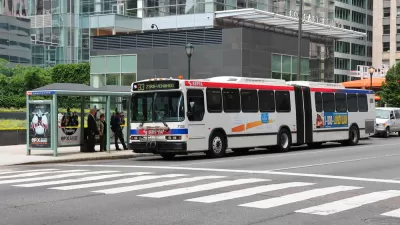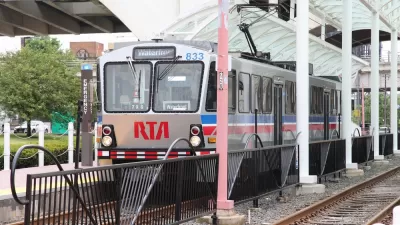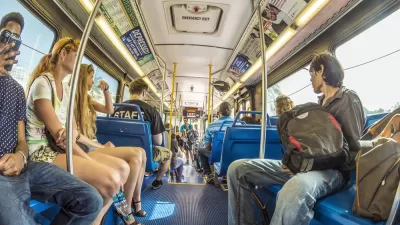With federal infrastructure funding on the table, local leaders are calling for a comprehensive strategy to improve the region’s public transit.

A group of civic leaders in Baltimore is calling on the city and the region to develop a comprehensive vision for the region’s mass transit—before federal infrastructure funds dry up. As Bruce DePuyt reports in Maryland Matters, “Their campaign, called Baltimore’s Transit Future, hopes to unite elected leaders, the business community and the public in support of a long-range plan to expand bus and rail service. They also want to make existing service more reliable.”
According to the article, “The effort will be shaped by six ‘pillars,’ which will include reducing the repair backlog, improving access to job centers, equity and the development of a 10-year ‘Rapid Transit Expansion Program.’” DePuyt notes that “Baltimore’s rail system pales in comparison to Metro, the commuter rail network in the Washington, D.C. region, even though both were launched at the same time. The region’s bus network performs below cities of comparable size.”
The campaign emphasizes that “As the region tries to bounce back from the pandemic, and with significant expansion underway at Tradepoint Atlantic, business leaders said the region is being held back by its substandard bus and rail operations.”
“Passage of a federal infrastructure bill has spurred conversations about the need to improve transit in Baltimore, with many advocates arguing for the creation of an authority similar to the Washington Metropolitan Area Transit Authority (WMATA).” DePuyt points out that “Leaders of the Baltimore’s Transit Future campaign said they are not endorsing the authority concept, nor have they coalesced behind any particular modes of travel or routes.”
FULL STORY: Baltimore Must Embrace Transit Vision While the Feds Are Flush With Funds, Groups Say

Trump Administration Could Effectively End Housing Voucher Program
Federal officials are eyeing major cuts to the Section 8 program that helps millions of low-income households pay rent.

Planetizen Federal Action Tracker
A weekly monitor of how Trump’s orders and actions are impacting planners and planning in America.

Ken Jennings Launches Transit Web Series
The Jeopardy champ wants you to ride public transit.

Crime Continues to Drop on Philly, San Francisco Transit Systems
SEPTA and BART both saw significant declines in violent crime in the first quarter of 2025.

How South LA Green Spaces Power Community Health and Hope
Green spaces like South L.A. Wetlands Park are helping South Los Angeles residents promote healthy lifestyles, build community, and advocate for improvements that reflect local needs in historically underserved neighborhoods.

Sacramento Plans ‘Quick-Build’ Road Safety Projects
The city wants to accelerate small-scale safety improvements that use low-cost equipment to make an impact at dangerous intersections.
Urban Design for Planners 1: Software Tools
This six-course series explores essential urban design concepts using open source software and equips planners with the tools they need to participate fully in the urban design process.
Planning for Universal Design
Learn the tools for implementing Universal Design in planning regulations.
Heyer Gruel & Associates PA
Ada County Highway District
Institute for Housing and Urban Development Studies (IHS)
City of Grandview
Harvard GSD Executive Education
Toledo-Lucas County Plan Commissions
Salt Lake City
NYU Wagner Graduate School of Public Service





























